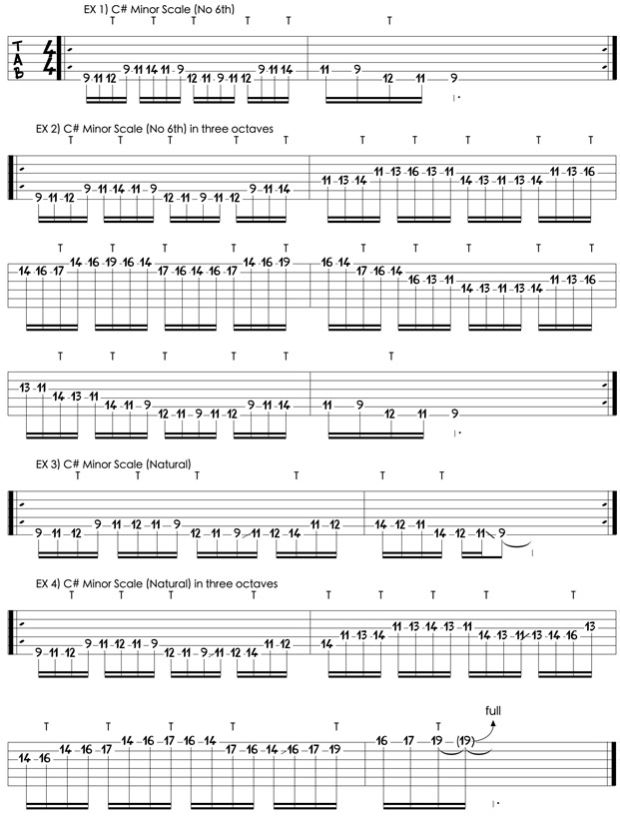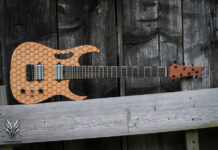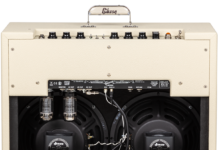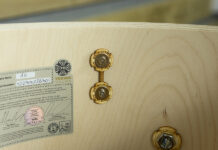
Incorporating Tapping Into Minor Scale Patterns
In this edition of Secrets of Shred, I’ll be taking you through my favorite way of incorporating tapping into minor scale patterns.
The following shapes are easy to memorize and can cover a lot of ground in various musical styles and situations.
Let’s begin with EXAMPLE 1 in the key of C# minor! EXAMPLE 1 is a C# minor scale with the 6th scale degree removed. This note is left out because it allows the shape to be used in a natural minor and a Dorian minor context. Removing a note or multiple notes from a scale also can imply melodic ideas and create interesting intervallic jumps when soloing. For this particular pattern, I tap with my first finger on the E string and my second finger on the A string.
Expanding on our first example, EXAMPLE 2 takes the previous pattern and moves it through three octaves. Be sure to use an identical left-hand fingering in each octave, ascending and descending. Focus on making the transitions through the string sets seamless.
For EXAMPLE 3, I combine two positions with slides and play a pattern using the C# natural minor scale. For this particular shape, I tap with the first finger on my right hand on the E and A strings. For our final example, EXAMPLE 4 takes our natural minor scale pattern and moves through the string sets into a long ascending run. The fingering is identical to EXAMPLE 3 in each position and string set. This run ends with a tapped bend on the 19th of the high E string. To achieve this bend, I tap with my right hand and bend with my left hand. I like to think of it as borrowing the vibrato and “feel” from my left hand, even though the note is being played with my right hand.
My favorite aspect of these patterns is that you need to use only two fingers on your left hand in each position. This simplifies the fingering so that it’s easy to flow through different positions when soloing. Once you’ve incorporated these shapes into your minor scale patterns, experiment with tapping notes in different scales and modes. Try removing notes from scales you typically play to create your own scales and patterns. Meditate on taking what you learn a step further than what is written on the page. Cheers!

Sammy Boller is the guitarist for the Citizen Zero. They recently signed with Wind Up Records/Concord Music Group and their debut single will be released in May 2016. Catch them on tour this summer at Rock on the Range and Rocklahoma. For more about Boller, or to ask him a question, write to him at info@sammyboller.com or follow him on Twitter.
Source: www.guitarworld.com












